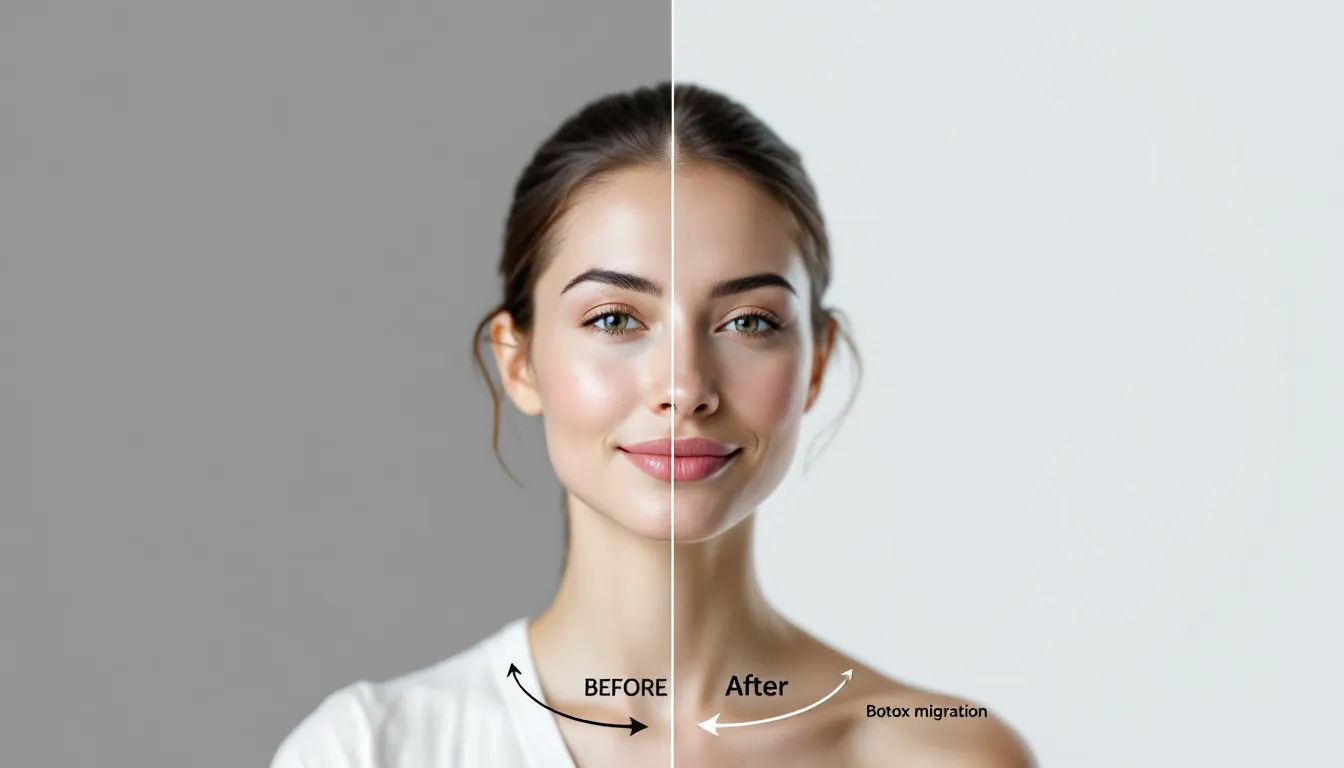Exercise After Botox: A Practical Guide for Safe Workouts
Wondering when you can exercise after Botox? This guide written by the experts on our team covers the essentials of post-Botox workouts, including when to resume physical activities, what types of exercises to avoid, and how to manage any post-treatment symptoms effectively.
Key Takeaways
Wait at least 24 hours before resuming strenuous exercise after Botox to minimize risks of migration and complications.
Avoid exercises that involve bending, lying down, or high-intensity activities immediately after treatment to maintain Botox effectiveness.
Engage in light activities like walking and stretching during the initial recovery period to support healing while avoiding excessive blood flow.
Why You Should Wait to Exercise After Botox
Understanding why waiting before resuming exercise after Botox is pivotal for achieving optimal results. Exercising immediately after Botox can lead to complications, including reduced effectiveness of the treatment. The increased heart rate and blood flow during physical activity can cause Botox to migrate from the intended areas, compromising the desired outcomes.
Avoid exercises that involve bending or lying down to prevent Botox migration. Such activities can cause the neurotoxin to shift away from the targeted facial muscles, leading to unintended effects. Avoid excessive heat and sun exposure to protect the treatment’s effectiveness.
The Effect of Vigorous Exercise on Botox
Engaging in vigorous exercise shortly after Botox treatment can significantly impact the results. Activities that increase heart rate and blood flow may lead to Botox migration, causing the neurotoxin to move from the intended injection sites. This migration can be exacerbated by involuntary movements and increased pressure during strenuous exercise, resulting in reduced effectiveness of the treatment.
Minimize these risks by staying upright for at least three hours post-Botox and avoiding strenuous activities during this period. Also, avoid exercises that might increase sweating or cause undue pressure on the face to maintain the treatment’s effectiveness.
Recommended Waiting Period
Most doctors recommend waiting at least 24 hours before resuming strenuous physical activities after Botox injections. This waiting period helps minimize complications like swelling or product migration and allows the Botox to settle properly in the targeted areas.
Even after the initial 24 hours, monitor your body’s response before engaging in more intense workouts as the risk of Botox migration decreases.
Safe Activities During the Waiting Period
Engaging in light activities such as gentle walking and stretching is generally safe during the initial 24-hour waiting period post-Botox. These activities help maintain comfort and support healing without risking the treatment’s effectiveness.
Maintaining light exercise and avoiding movements that might significantly increase blood flow can help ensure optimal results, promoting increased blood flow.
Types of Exercises to Avoid Post-Botox
Avoid certain types of exercises after receiving Botox treatment to prevent complications. Strenuous exercise, in particular, can cause issues like increased bruising, swelling, and Botox migration. Avoid activities that involve bending or inversions, such as specific yoga poses, as they pose a risk of shifting the neurotoxin away from the targeted areas.
Skip heat-inducing activities like hot yoga or saunas during the initial post-Botox period. Such activities can increase blood flow and potentially cause the Botox to migrate, leading to less effective results.
High-Intensity Interval Training (HIIT)
High-Intensity Interval Training (HIIT) can significantly increase blood flow, potentially leading to Botox migration and reduced treatment effectiveness. Wait at least 24 hours after Botox injections before resuming HIIT to avoid complications due to its intense nature.
Avoid excessive sweating and heat exposure during this period, as these factors can interfere with the efficacy of the treatment. Gradually reintroduce HIIT into your fitness routine after the initial waiting period to maintain the benefits of your Botox treatment while staying active.
Yoga and Pilates Involving Bending
Yoga and Pilates poses involving bending or inversions can cause the neurotoxin to shift from the intended area, compromising the treatment’s effectiveness. Avoid any exercises that require lying down or bending over during the initial post-Botox period.
Steering clear of such positions helps ensure the Botox remains in the targeted facial muscles and achieves the desired results.
Contact Sports
Engaging in contact sports immediately after Botox can lead to increased bruising and pressure on the injection site, jeopardizing the treatment’s effectiveness. The physical nature of contact sports poses a risk of trauma to the treated areas, so avoid such activities during the initial recovery period.
Safe Exercise Practices After Botox
Once the initial waiting period has passed, gradually reintroduce exercise to ensure the Botox treatment settles properly. Start with light activities and monitor your body’s response before moving on to more intense workouts. Some doctors suggest avoiding high-impact activities for a full week to ensure optimal results.
Gradually ease back into your regular exercise routine and avoid activities that cause discomfort or swelling to maintain the benefits of your Botox treatment. Following these guidelines supports the longevity and effectiveness of your Botox results.
Light Cardio Options
After the initial waiting period, light cardio activities like gentle walking or stationary cycling can be incorporated into your fitness routine. These low-impact exercises maintain cardiovascular health without significantly increasing blood flow or heart rate. Light gardening is another recommended light cardio option, providing a pleasant and effective way to stay active post-Botox.
Avoid bending over during these exercises to prevent Botox migration. Keeping a stable heart rate and avoiding significant increases in blood flow helps ensure the treatment’s effectiveness.
Gentle Strength Training
For strength training after Botox, focus on exercises that avoid pressure on the face and maintain an upright head position. Safe strength training practices support your Botox results and prevent complications.
Avoid exercises that require bending or putting undue pressure on the facial area to minimize the risk of facial pressure and Botox migration. Adhering to these guidelines allows you to incorporate strength training into your routine while maintaining the benefits of your Botox treatment.
Stretching and Flexibility Workouts
Gentle stretching exercises maintain flexibility without risking the treatment’s effectiveness. Light yoga and stretching that avoid bending or inversions are safe post-Botox and can help keep your body limber and relaxed.
Light facial exercises post-Botox promote subtle movements without overexertion. These exercises help maintain muscle tone and flexibility in the treated areas, contributing to overall well-being and optimal Botox results.
Managing Post-Botox Symptoms During Exercise
Some post-Botox symptoms during exercise are not uncommon. Temporary pain, discomfort, bruising, and redness are typical side effects when resuming physical activities. Strenuous exercise may exacerbate these symptoms, so manage them effectively while maintaining your fitness routine.
Recognizing signs of Botox migration and knowing how to address common issues like bruising and swelling helps manage these symptoms and ensures the best possible results from your treatment.
Recognizing Signs of Botox Migration
Botox migration can occur if aftercare instructions are not followed properly, affecting the desired results. Signs of migration may include uneven facial features like a drop in one eyebrow or an asymmetric smile, as well as prolonged swelling or bruising around the injection sites. Contact your healthcare professional immediately if you notice any of these signs for further advice.
Avoid touching or massaging the affected areas and follow aftercare instructions carefully to minimize the risk of Botox migration. Avoid strenuous activities immediately after treatment to prevent the neurotoxin from shifting away from the targeted areas.
Dealing with Bruising and Swelling
Take a few precautions to manage bruising and swelling after exercising post-Botox. Rest and avoid excessive movement to minimize these symptoms.
Apply a cold pack to the treated area to reduce swelling and provide relief from discomfort.
Addressing Temporary Pain and Discomfort
Manage temporary pain and discomfort at the injection site with over-the-counter pain relievers like Tylenol. A cold pack can also help reduce pain and swelling.
Avoid excessive movement and exercise to prevent worsening of these symptoms and allow the treatment area to heal properly. It is important to avoid strenuous exercise to facilitate recovery.
Enhancing Botox Results Through Proper Care
Proper aftercare maximizes the effectiveness and longevity of your Botox results. Avoid activities that induce high temperatures, like hot baths and strenuous exercise, to maintain the treatment’s effectiveness. Following your healthcare professional’s aftercare recommendations is crucial for achieving the best possible outcomes from your Botox treatment.
Taking these precautions prevents Botox migration and ensures the neurotoxin remains in the targeted areas, providing the desired Botox cosmetic results.
Avoiding Heat and Excessive Sweating
Activities that induce high temperatures can negatively impact Botox results. Avoid hot baths and strenuous exercise for at least 24 hours after Botox. Avoid heat exposure for 24 to 48 hours post-treatment to maintain the effectiveness of the Botox.
Excessive sweating can affect the results, so avoid activities that cause heavy sweating during the initial recovery period. Taking these precautions helps ensure your Botox treatment provides the best possible results.
Staying Hydrated and Using Sunscreen
Staying hydrated maintains skin health and enhances the longevity of Botox effects. Drinking plenty of water supports skin healing and helps maintain the desired results.
Protecting your skin from sun exposure is vital post-Botox to prevent sun damage that can compromise the treatment results. A broad-spectrum sunscreen with an SPF of at least 30 provides the necessary protection.
Following Medical Professional's Instructions
Adhering to the aftercare instructions from your healthcare professional ensures the safety and effectiveness of your Botox treatment. Following these guidelines diligently helps achieve optimal results and minimizes the risk of complications.
Your healthcare provider’s advice is tailored to your specific needs and should be followed carefully.
Summary
In summary, exercising after Botox requires careful consideration and adherence to specific guidelines to ensure the best possible results. Waiting at least 24 hours before engaging in strenuous activities, avoiding exercises that involve bending or inversions, and gradually reintroducing physical activities can help prevent complications and maintain the effectiveness of the treatment.
Proper aftercare, including avoiding heat and excessive sweating, staying hydrated, and using sunscreen, plays a crucial role in enhancing Botox results. By following your healthcare professional’s instructions and taking these precautions, you can enjoy the full benefits of your Botox treatment and maintain your fitness routine safely.
Frequently Asked Questions
Can you workout after botox?
It is advisable to avoid workouts for 24 hours after receiving Botox to ensure optimal results. Light walking is acceptable, but refrain from any strenuous activities or positions that may affect the treatment.
How can I reduce swelling and bruising after Botox?
To effectively reduce swelling and bruising after Botox, rest and avoid excessive movement, while applying a cold pack to alleviate pain and discomfort. These steps can significantly enhance your recovery experience.
How Long Does Lip Filler Last?
Lip fillers can last anywhere from 6-18 months depending on a variety of factors. check out our blog for more information.





